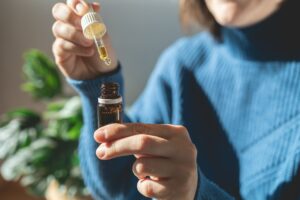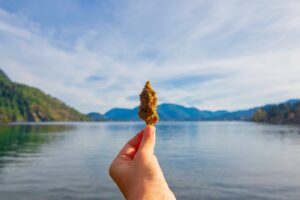Vaping, tinctures and gummies are my favorite ways of consuming cannabis. Which method gives you the best bang for your buck? Which costs more?
Molly P
The costs associated with cannabis aren’t the most reliable method of comparing these methods of ingestion. I think you have to ask yourself which one works best for you as far as onset, duration and potency. And do you prefer inhaling the product, putting drops under your tongue or in drinks, or consuming it as a tasty gummy or other edible?
But if you want to look at cost, Headset, a Seattle-based analytics company has done a report comparing the cost of THC in different various products. The average price per milligram of THC in edibles is 20 cents (the same price for capsules), while it is 32 cents for tinctures, sublinguals, and topicals.
The price of THC in tinctures, sublinguals, capsules and topicals could be higher because of the ratio of THC to CBD in those products. For example, a tincture with a 1:2 ratio of THC to CBD might have a higher price point for the THC.
Again, it depends on consumption methods, but if you compare vaping cannabis to smoking it, usually vaping is considered less costly because it is more concentrated and stretches your supply longer.
Of course, with vaping you have to take into account costs for the type of vaping pen you use, the heating method, battery life, how you choose to smoke (for example, buds, distillate or live resin), accessories, and the ongoing cost of oil cartridges, if you use them.
In considering which method of consuming cannabis is more “economical” for you — including how quickly CBD works in edibles, topicals, vaping and oils — it may be worthwhile to consider other factors. For example, vaping may be the fastest way to feel the effects of consuming cannabis, usually happening a few minutes after inhalation.
Against this there are some health concerns. Some vape cartridges contain propylene glycol (also found in e-cigarettes), which can break down into formaldehyde, a possible carcinogen, at high temperatures. However, there are “solvent-free” oils available that don’t use propylene glycol.
By comparison, edibles, including gummies, may take a longer time to get into your system, with onset taking 30 to 90 minutes, and perhaps even longer in some cases. Onset time can also be affected if you’ve eaten something before this. But against this, there is a huge variety of edible products available for every taste, from sweet to savory. And if you get a packaged edible with ingredients listed, this can help you with dosing for medical marijuana needs.
Gummies are one of the most prevalent types of edibles out there, so it is easy to find one with the right THC:CBD ratio you want, as well as the amounts of these cannabinoids in each piece.
A tincture is a liquid cannabis concentrate made using alcohol for the extraction. It is the second-fastest way to feel the effects of the cannabis — usually 30 minute or less after administering it under your tongue with an eyedropper.
Against this, some people may not like the lingering aftertaste of tinctures (although different flavors may help with this). Dosing can sometimes be a bit tricky, which can be minimized with a labeled dropper.
I hope that helps.
Nurse Talli






